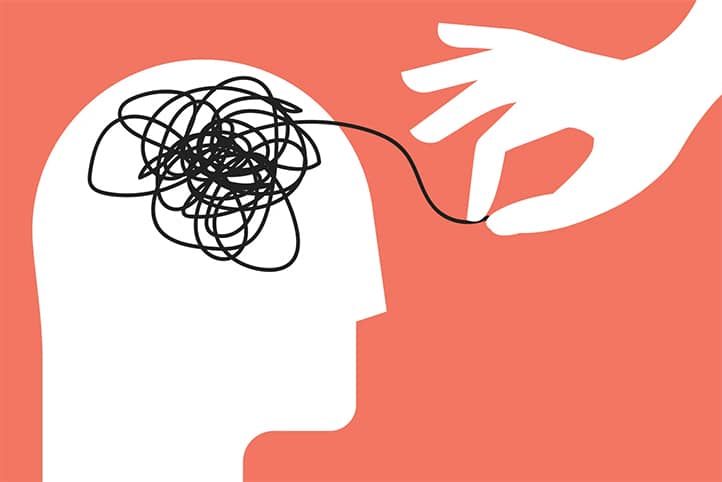Reverse Psychology is a way to encourage a person to do the opposite of what they are told or suggested. This approach is based on people’s natural tendency to resist direct pressure and maintain their freedom of choice.
Imagine a situation where a parent says to a teenager, “You’re probably too busy to clean your room.” Instead of a direct command, this statement may provoke the teenager to clean up to prove their independence and responsibility.
Although the term “reverse psychology” is relatively new, the concept itself has deep roots in the history of human interaction. Elements of this approach can be found in ancient philosophical treatises and literary works.
- Ancient Greece. Socrates used a method known as the “Socratic dialogue,” which often included elements similar to reverse psychology.
- Eastern Philosophy. In Taoist texts like the Tao Te Ching, there are ideas of indirect influence and “non-action” (wu-wei), which resonate with the principles of reverse psychology.
- Modern Psychology. The term “reverse psychology” became widely used in the 1970s when psychologists began to systematically study this phenomenon.
Today, reverse psychology is recognized as a powerful tool of influence, used in various fields—from parenting to marketing and politics.

What Is Reverse Psychology: Key Principles
The human mind is an amazing tool capable of the most unexpected reactions. Sometimes our actions contradict logic, and we ourselves are surprised by our decisions. It is this peculiar aspect of our thinking on which reverse psychology is built.
Imagine a child who is forbidden from eating sweets before dinner. Suddenly, these candies become the most desirable treat in the world. This simple example illustrates a deep principle of human nature—the allure of the forbidden.
Reverse psychology plays on the strings of our subconscious, touching on basic instincts and emotions. It bypasses rational thinking, appealing to deep desires and fears.
Understanding the key principles of reverse psychology opens the door to a world of subtle manipulation and influence. However, this knowledge is a double-edged sword, requiring responsible and ethical use.
Psychological Mechanisms Behind It
Reverse psychology relies on several key psychological mechanisms:
- Reactive resistance. People tend to resist direct attempts at control or persuasion, striving to maintain their autonomy.
- Cognitive dissonance. Discrepancy between beliefs and actions creates discomfort, which people strive to eliminate.
- Self-perception. People form their self-image based on their actions, so by acting contrary to an explicit suggestion, they may alter their self-perception.
- Forbidden fruit effect. What is prohibited or unavailable often seems more attractive.
Key Elements and Techniques
- Paradoxical instructions. Suggesting doing the opposite of the desired action.
- Minimizing importance. Downplaying the significance of the desired action or decision.
- Providing choice. Emphasizing the person’s freedom of choice, even if that choice is limited.
- Using humor. A light, humorous approach can reduce resistance.
- Contradictory technique. Arguing for the opposite position to provoke disagreement.
Why Reverse Psychology Works?
Reverse psychology is effective for several reasons:
- Preserving a sense of control. People value their autonomy and the right to make decisions. Reverse psychology allows them to feel they made the choice themselves.
- Reducing resistance. The absence of direct pressure decreases the natural tendency to resist.
- Activating internal motivation. Instead of external coercion, reverse psychology stimulates an internal desire to act.
- The element of surprise. An unconventional approach can spark interest and make the person reconsider their position.
- Playing on emotions. Reverse psychology often appeals to emotions, such as pride or the desire to prove one’s competence.
Signs of Reverse Psychology
Recognizing reverse psychology can be challenging, but there are a few key signs:
- Unexpected suggestions. Advice or suggestions that contradict the expected.
- Minimizing significance. Attempts to downplay the importance of a decision or action.
- Emphasis on choice. Frequent reminders of a person’s right to act at their discretion.
- Provocative statements. Statements that may provoke disagreement or the desire to prove otherwise.
- Use of reverse logic. Arguments that seem contrary to common sense or the expected result.

Applications of Reverse Psychology
Reverse psychology is not just a theoretical concept, but a powerful tool that can be applied in a variety of areas of life. From family relationships to world politics, its influence can be found everywhere if you know where to look.
The art of sales is transformed by reverse psychology. A skilled salesperson can say, “Perhaps this product is too complicated for you,” awakening in the client the desire to prove the opposite.
In the world of parenting, reverse psychology becomes a subtle tool for character building. A parent who says, “You’re too young for this,” can unwittingly push a child to new achievements.
Even in the realm of self-improvement, we often resort to reverse psychology without realizing it. Telling ourselves, “I can never do that,” sometimes awakens in ourselves the determination to overcome all obstacles.
In Everyday Life
Reverse psychology is often used in everyday situations, even if we don’t realize it:
- Interpersonal relationships. A partner might say, “You probably don’t want to go to the movies tonight,” hoping for the opposite reaction.
- Self-motivation. A person might say to themselves, “I probably can’t run 5 km,” to prove themselves wrong.
- Conflict resolution. Suggesting to the other side to walk away from negotiations may stimulate the desire to continue the dialogue.
- Decision-making. Considering the worst option may lead to choosing the best alternative.
In Parenting
Parents often resort to reverse psychology, though it requires caution:
- Encouraging independence. Saying, “You’re probably too young to tie your own shoelaces” might motivate the child to learn.
- Stimulating interest in learning. “This task may be too difficult for you” can spark a desire to tackle it.
- Developing responsibility. Saying, “I think you’ll forget to feed the cat” might lead to more attentive care.
- Behavior management. Saying, “You probably can’t be quiet in the library” may evoke a desire to prove otherwise.
In Marketing and Advertising
Marketers actively use reverse psychology to influence consumer behavior:
- Limited offers. “Only today” or “Only a few left” create a sense of scarcity and urgency.
- Minimizing importance. “This might not be for you” can pique interest in the product.
- Provocative slogans. Ads that seem to discourage purchases may actually stimulate sales.
- Social proof: “We’re not sure if we can meet the demand” can increase the desire to buy.
In Negotiations and Sales
Sales and negotiation professionals often use reverse psychology techniques:
- Take-away technique. A salesperson might say, “This product might not be for you,” to increase the client’s desire to buy.
- Minimizing pressure. “Take your time deciding” can paradoxically accelerate the decision-making process.
- Presenting the opposing side. Voicing the opponent’s arguments can help strengthen one’s position.
- Conceding initiative. “We can end negotiations if you’re not ready” may stimulate the other side to participate more actively.
Reverse psychology is a powerful tool of influence that, when used skillfully, can be effective in many areas of life. However, it is important to remember the ethical aspects of its use and the potential risks of manipulation.

Ethical Considerations
Power over the human mind is a huge responsibility. Reverse psychology, being a powerful manipulative tool, raises serious ethical questions. Where is the line between persuasion and manipulation?
History has many examples where psychological techniques were used harmfully. From propaganda to personality cults, reverse psychology can become a dangerous weapon in the wrong hands.
However, it would be a mistake to dismiss this method entirely due to potential risks. Like any tool, reverse psychology is neutral in itself. Its ethical nature is determined by the intentions and actions of those who use it.
Professionals using reverse psychology bear a special responsibility. Psychologists, marketers, and politicians all must constantly assess the ethical consequences of their actions, balancing between effectiveness and moral principles.
Potential Risks and Misuse
- Manipulation. Reverse psychology can be used to manipulate people, causing them to act against their true desires or interests.
- Violation of autonomy. Although this method creates an illusion of choice, it may restrict actual freedom of decision-making.
- Emotional harm. Incorrect use can lead to frustration, lowered self-esteem, or mistrust.
- Relationship breakdown. Excessive use in interpersonal relationships can lead to a loss of trust and sincerity.
Boundaries of Application
- Legal restrictions. In some fields, such as advertising, there are legal limitations on the use of manipulative techniques.
- Professional ethics. In psychotherapy and counseling, the use of reverse psychology should be limited and transparent to the client.
- Age restrictions. Applying it to children and teenagers requires special caution due to their vulnerability and immaturity.
- Cultural sensitivity. In different cultures, reverse psychology may be perceived differently and have unexpected consequences.
Negative Aspects of Reverse Psychology
- Loss of trust. If people realize they are being manipulated, it can lead to a loss of trust and respect.
- Backfire effect. In some cases, reverse psychology can strengthen undesirable behavior instead of changing it.
- Ethical dilemma. Using this method can cause moral discomfort for the one applying it.
- Dependency. Overreliance on reverse psychology may lead to an inability to communicate effectively in a straightforward manner.

The Effectiveness of Reverse Psychology and Scientific Research
The scientific world has not ignored the phenomenon of reverse psychology. Decades of research have shed light on its mechanisms, effectiveness, and limitations. From lab experiments to field studies, scientists are working to unravel the mysteries of human behavior.
New horizons in understanding reverse psychology are being opened by neurobiology. Modern brain imaging methods allow scientists to observe how neural activity changes in response to paradoxical stimuli.
Social psychology also contributes by studying the influence of reverse psychology on group dynamics. How does a crowd react to contradictory messages? How does public opinion form under indirect persuasion?
An interdisciplinary approach is becoming key to deeply understanding reverse psychology. By combining knowledge from psychology, sociology, neurobiology, and even economics, researchers create a comprehensive view of this complex phenomenon.
Overview of Research on Reverse Psychology
- Research in Social Psychology. Numerous experiments confirm the effectiveness of reverse psychology in changing behavior and attitudes.
- Neurobiological Studies. Brain activity studies show how reverse psychology affects decision-making processes.
- Marketing Studies. Analysis of advertising campaigns demonstrates the influence of reverse psychology on consumer behavior.
- Educational Research. Studies on the use of reverse psychology in educational contexts show its potential for motivating students.
Criticism and Limitations of the Method
- Ethical Issues. Many researchers question the ethics of using reverse psychology in experiments.
- Limited Applicability. Not all people or situations are susceptible to this method’s influence.
- Measurement Complexity. Evaluating the effectiveness of reverse psychology is challenging due to numerous influencing factors.
- Cultural Differences. The method’s effectiveness may vary significantly depending on the cultural context.

Practical Examples and Case Studies
Theory comes to life in practice. Real stories of reverse psychology applications reveal its potential and pitfalls better than any academic work. From bold marketing campaigns to quiet family revolutions, these cases paint a vivid picture of the method’s possibilities and risks.
The business world abounds with examples of creative use of reverse psychology. Companies that dared to tell their customers, “Don’t buy our product,” sometimes achieved incredible results, flipping traditional advertising ideas upside down.
In education, reverse psychology also finds unexpected applications. Teachers who tell students a task might be too hard for them sometimes ignite unprecedented enthusiasm and drive for achievement.
However, not all attempts to use reverse psychology are successful. Analyzing unsuccessful cases is as important as studying triumphs. These stories teach caution and remind us of the fine line between influence and manipulation.
Successful Applications
- Marketing Campaign by Avis. The slogan “We’re number two. We try harder” successfully used reverse psychology to attract customers.
- Psychotherapy. In one case, a therapist told a client with social anxiety, “Perhaps you’re not yet ready for social interactions,” which motivated the client to work actively on their problem.
- Parenting. A story about a father telling his child that they probably couldn’t learn to ride a bike without training wheels, leading the child to insist on their removal and quickly learn to balance.
Analysis of Unsuccessful Attempts
- Political Campaign. A reverse psychology attempt in a pre-election campaign was perceived as offensive, leading to a loss of support.
- Educational Experiment. A case where a teacher told students they probably couldn’t solve a complex task, resulting in demotivation and refusal to attempt it.
- Corporate Strategy. A company that tried to retain employees by saying they might not succeed in other companies, which led to mass resignations.
- Advertising Campaign. A product advertisement that used reverse psychology by telling consumers not to buy it but was taken literally, resulting in decreased sales.

Comparison with Other Psychological Techniques
Reverse psychology does not exist in a vacuum. It is part of a rich arsenal of psychological methods, each with unique characteristics and applications. Understanding the place of reverse psychology in this spectrum allows for more effective and conscious choice of influence tools.
For example, cognitive-behavioral therapy focuses on changing thought patterns to transform behavior. In contrast, reverse psychology often works on a subconscious level, bypassing rational thinking.
The “foot-in-the-door” technique and reverse psychology may seem similar, but they operate on different mechanisms. The former is based on gradually increasing requests, while the latter plays on contradictions and paradoxes.
Neuro-Linguistic Programming (NLP) and reverse psychology both work with language models and subconscious reactions. However, NLP offers a broader range of techniques, while reverse psychology focuses on a specific influence mechanism.
Differences from Direct Persuasion
- Impact Mechanism. Reverse psychology uses indirect methods, whereas direct persuasion relies on logical arguments and overt influence.
- Role of Resistance. Reverse psychology works with a person’s resistance, while direct persuasion attempts to overcome it.
- Process Awareness. In direct persuasion, people usually recognize the attempt to influence them, whereas reverse psychology often operates on a subconscious level.
- Emotional Component. Reverse psychology more strongly engages emotional reactions, while direct persuasion primarily appeals to rational thinking.
Similarities and Differences with Other Influence Methods
- Social Proof. Both methods can use group pressure, but reverse psychology does this indirectly.
- Foot-in-the-Door Technique. Similar to reverse psychology in that it starts small but uses a direct approach.
- Framing. Reverse psychology can use framing but does so in a paradoxical way.
- NLP (Neuro-Linguistic Programming). Both techniques work with the subconscious, but NLP uses a broader range of linguistic and behavioral patterns.

Defending Against Reverse Psychology
In a world where influence and persuasion are integral to daily life, recognizing and resisting manipulations becomes a vital skill. Reverse psychology, as a subtle tool of influence, requires particular vigilance.
Awareness is the first line of defense. Developing critical thinking and the ability to analyze others’ motives helps identify attempts at indirect influence. The ability to ask the right questions and resist emotional provocations becomes key to maintaining autonomy of thought.
Knowledge is power, and this is especially true in the context of psychological manipulation. Studying the principles of reverse psychology makes us less vulnerable to its influence. Understanding the mechanisms of influence allows us to make a conscious choice—to yield or resist.
However, defense should not become paranoia. It’s important to find a balance between healthy caution and openness to communication. Reverse psychology is a tool that can be used for good or harm, and our task is to learn to discern these cases.
How to Recognize Attempts at Reverse Psychology?
- Notice Paradoxical Statements. If someone tells you not to do something or asserts you are not capable of something, it may be a sign of reverse psychology.
- Analyze Your Emotional Reactions. If you feel a sudden desire to prove something or do the opposite, someone may be trying to influence you.
- Look for Hidden Motives. Consider whether the speaker may have a hidden goal opposite to what they claim.
- Pay Attention to Context. Reverse psychology is often used in situations where there is a clear conflict of interest or a need for persuasion.
How to Resist Reverse Psychology?
- Awareness. The first step is to recognize that someone is trying to influence you. Pause and think before reacting.
- Ask Questions. Ask the person directly about their intentions or request an explanation for a certain statement.
- Take a Pause. Give yourself time to think and analyze the situation before making a decision or acting.
- Stick to Your Values. Remember your true desires and goals; don’t let yourself be manipulated.
- Practice Assertiveness. Learn to express your thoughts and feelings directly without falling for provocations.
- Seek Additional Information. Don’t make decisions based on only one source of information or opinion.

Conclusion
Reverse psychology is a fascinating and complex phenomenon deeply rooted in human nature. Our tendency to contradict, strive for autonomy, and react paradoxically to prohibitions and restrictions creates fertile ground for using this technique in various areas of life.
From marketing to parenting, from politics to self-improvement, reverse psychology finds broad applications. Its power lies in its ability to bypass rational thinking, appealing to deep emotions and instincts. However, this same power makes it a potentially dangerous tool, requiring responsible and ethical use.
Scientific research continues to reveal the mechanisms of reverse psychology, its effectiveness, and limitations. An interdisciplinary approach combining knowledge from psychology, neurobiology, sociology, and other fields allows for a more complete picture of this phenomenon. Nevertheless, many aspects of reverse psychology remain subjects of discussion and require further study.
In a world where influence and persuasion play an increasing role, the ability to recognize and resist manipulation becomes a crucial skill. Understanding the principles of reverse psychology not only protects us from unwanted influence but also opens up new opportunities for effective communication and personal growth. The future of reverse psychology lies at the intersection of ethical standards, scientific discoveries, and practical application, promising new exciting perspectives in understanding human behavior and interaction.




